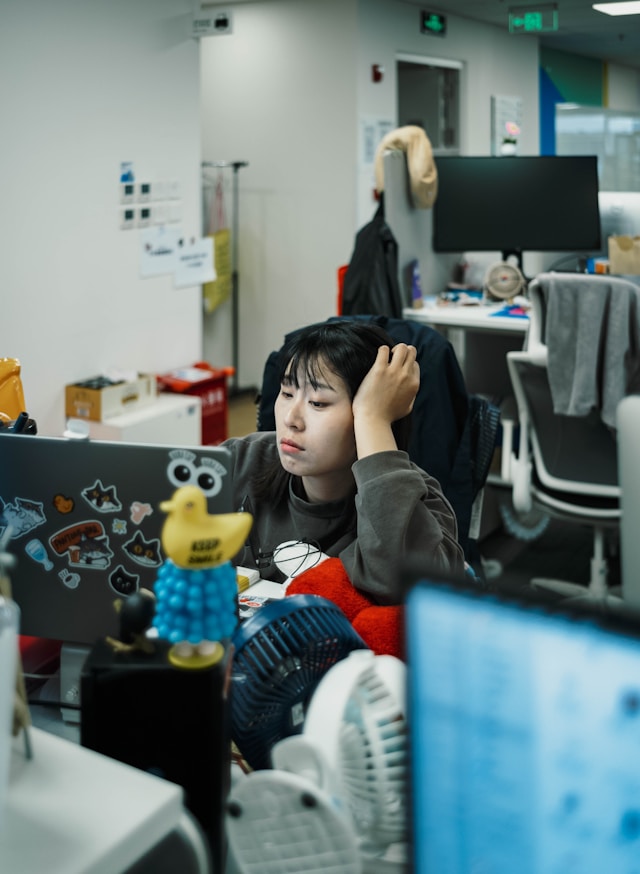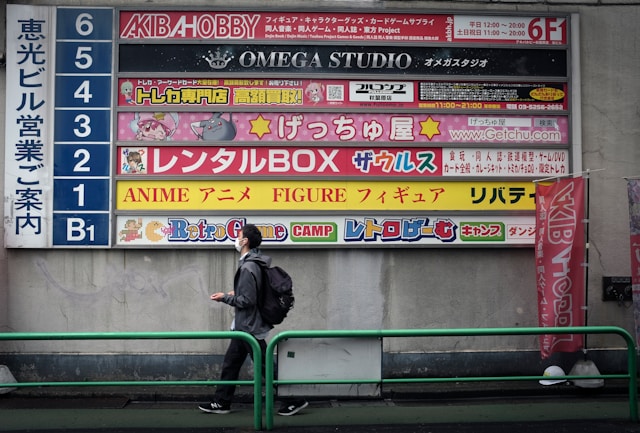Jujutsu Kaisen, One Piece, Attack on Titan and Pokémon – the animé industry today is bigger than ever before. Once merely the reserve of a niche subculture, the Japanese cartoon films and series evolved long ago developed to become a global market worth billions. In 2023 alone, their value was estimated at approximately 21 billion US dollars. In recent years, even streaming giants like Netflix, Prime Video and Crunchyroll have been attempting to outbid one another with their own productions in an effort to profit from this boom. This international hype actually conceals a dark reality, however, as often catastrophic working conditions are the rule in the animé industry.

Animators and synchronisers living at subsistence level

Despite the global success enjoyed by the animé industry, the animators – without whom the entire industry would simply not exist – live subject to precarious conditions, as a recent report by the United Nations (UN) shows. Because despite their work’s commercial success, the annual entry-level wages of animators remain as low as 1.5 million yen to this day. That’s about 9,000 euros. Particularly shocking is the fact that 30.8 percent (correct as at 2023) of those employed are working as freelancers, and consequently enjoy none of the protection provided by the valid labour laws in Japan. The result of all this? Low wages, excessively long working hours, unpaid overtime, short (or no) breaks, enormous time and performance pressure, hardly any appreciation and a life spent at subsistence level. If all these problems are not addressed, the UN report warns, the industry could be on the verge of collapse.
Despite their high recognition value, the synchronisers (known as “seiyuus”) often earn very little, particularly at the beginning of their career. Their income conforms with a fixed ranking system: entrants at “Junior Ranking” level receive just 15,000 yen (c. 120 euros) per animé episode. Their earnings rise only slightly, by 1,000 yen (c. 8 euros) with each of the 30 subsequent rankings, so that even at the highest ranking, Level A, they can earn a maximum of 45,000 yen (c. 360 euros) per episode. It makes no difference whether the role is a central or minor character, or how successful the animé is – income is defined exclusively by the ranking of the seiyuus at the time.
In a best-case scenario, a typical animé consisting of twelve episodes might be expected to generate an income of around 1,440 euros over a period of three months. Depending on the number of roles the synchronisers can take on simultaneously, however, wages can fluctuate sharply. In addition to this, agencies usually keep 20% of the income, while another 20% is lost through taxation. In the worst case, they only have around 80 euros a week left to live on. Then there’s the fact, because the income is so irregular, banks will often not grant them loans. Many are forced to take on second jobs or are supported by their families if they even want to gain a foothold in the industry.
The causes are wide-ranging
The exploitation of workers in the animé industry has deep-rooted structural causes, which go all the way back to the 1960s. The success of Astro Boy in 1963 established an industry standard which focussed on weekly 30-minute episodes with tight deadlines. To meet these deadlines, the companies used outsourcing, and farmed out the work processes or steps to external service providers.
Usually, modern animé productions are financed by so-called production committees – associations of publishers, toy companies and other companies. These committees set the budget and distribute the profits. The actual production companies outsource large parts of the work to smaller studios and agencies, which in turn commission other subcontractors and freelancers. As a result of this chain model, the financial risk is distributed, but so are the profits – often, there is hardly anything left for the creators themselves. Payment can be delayed for months on end, or even fail to appear at all.
Many of the working conditions in the industry arise informally, frequently over the telephone or messaging apps – without written contracts or clear regulations governing payment. This leads to a situation whereby many of those involved don’t even know how much they will be earning – or whether they will be paid at all. Although new legislation in Japan recently demanded written contracts and payment within 60 days, implementation is proving to be difficult. On top of this, there is the fact that, unlike in other countries, trade unions are hardly even represented in the Japanese animé industry.
Despite the poor payment and hard working conditions, many people dream of working in the animé world from childhood onwards. This passion is exploited by the industry. Many young artists are prepared to work subject to undignified conditions, in the hope of getting a better-paid position at some point in the future. But such positions are rare, and the competitive pressure remains high.
Japan takes measures
The UN report has created waves worldwide. Due to the increasing criticism, the Japanese government is now taking concrete measures, by means of the Japan Fair Trade Commission (JFTC), to act against this exploitation.
Online form set up
Amongst other things, the JFTC set up a form on its website on 29 January 2025 with which workers in the film and animé industry can report cases of exploitation and/or bad working conditions. The General Secretary of the JFTC, Tetsuya Fujimoto, commented: “We have been made aware that the profits [from animé and film production] are not being sufficiently passed on to the production site”. In particular, the JFTC is hoping to receive information, amongst other things, relating to the following problems:

- Lack of work contracts
- Unreasonably low payment
- Unjustified order cancellations without compensation
- Unpaid subsequent corrections
- Unreasonable schedules
The authority has launched a public call to creative workers in the entertainment sector to report such practices, and is planning to publish the findings by end-2025 at the latest. It remains to be seen whether, and how many of those affected actually go to the authority.
Translated by Tim Lywood
#Ausbeutung #ModerneAusbeutung #Japan #Anime #StopptAusbeutung #FinanzielleAusbeutung #Aufklärung #AgainstHumanTrafficking #GegenMenschenhandel #EndExploitation #EndTrafficking #HopeForTheFuture #Österreich
